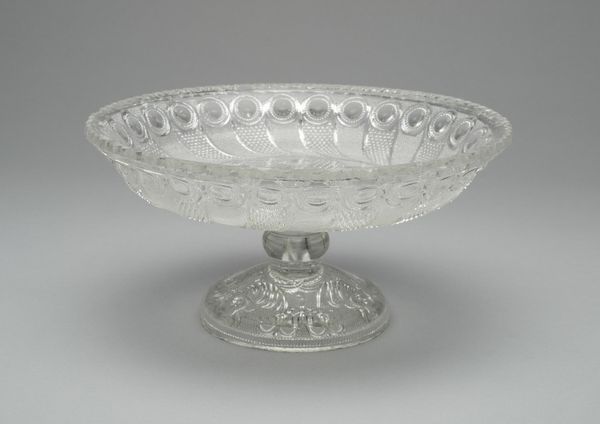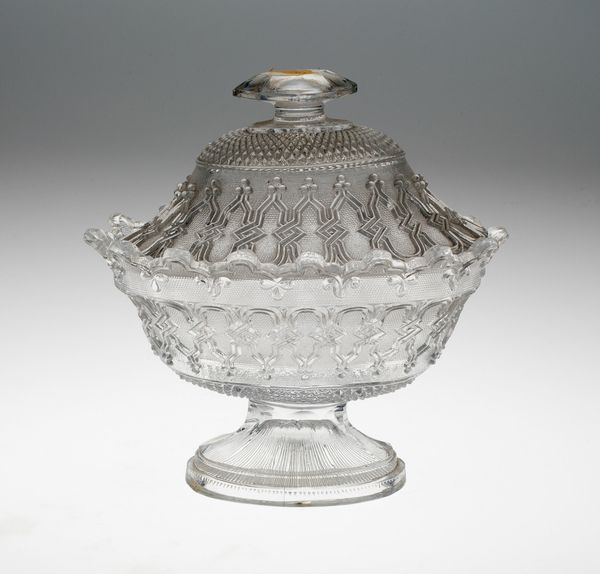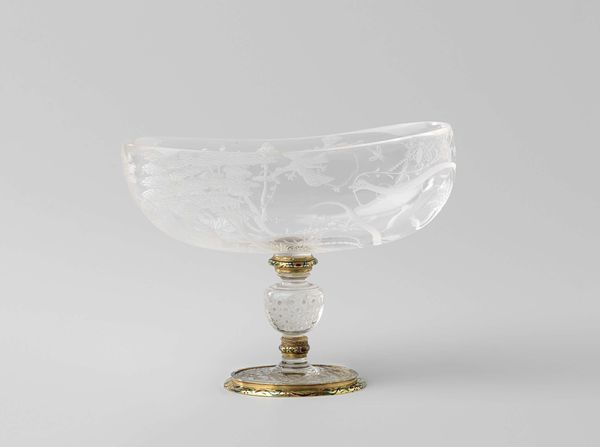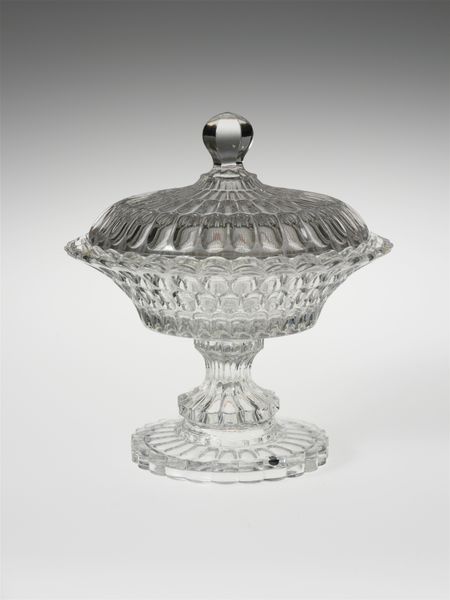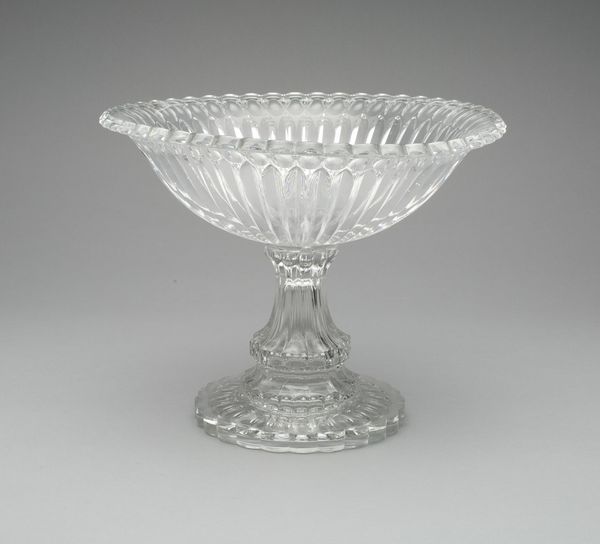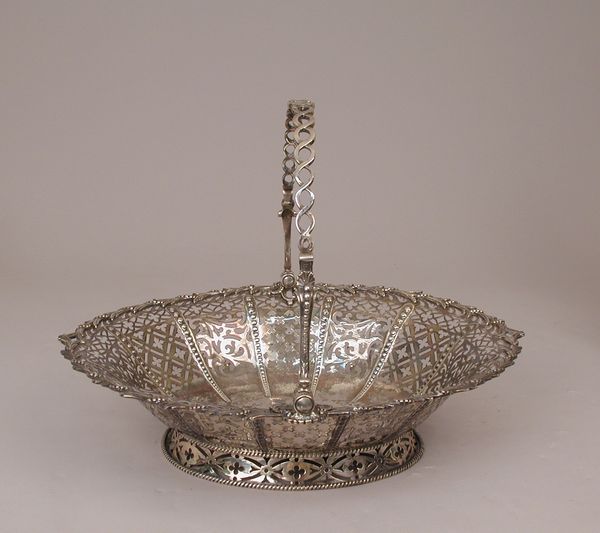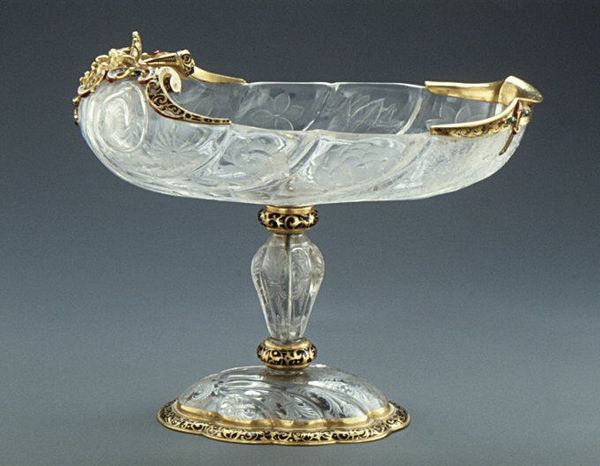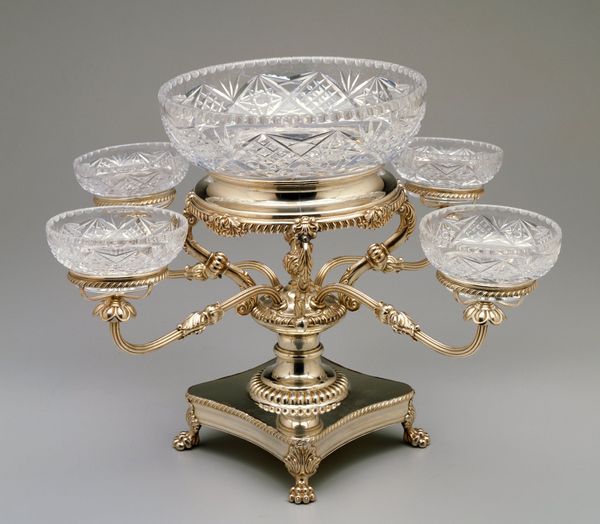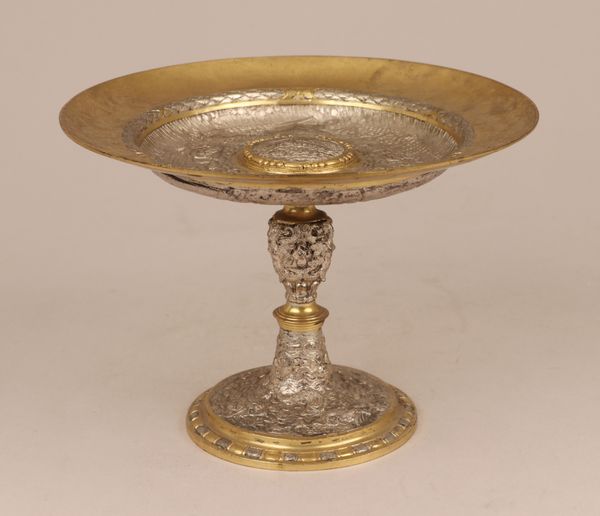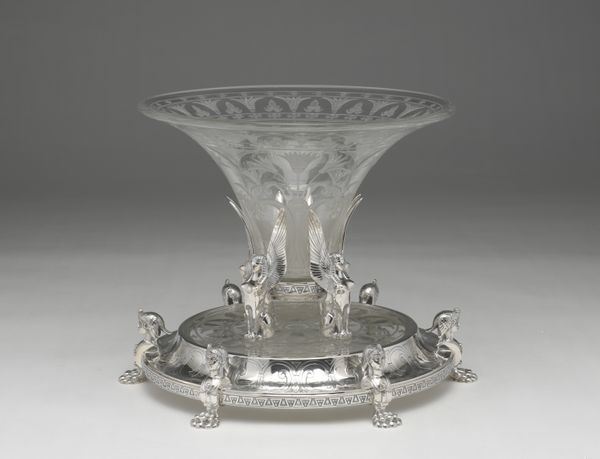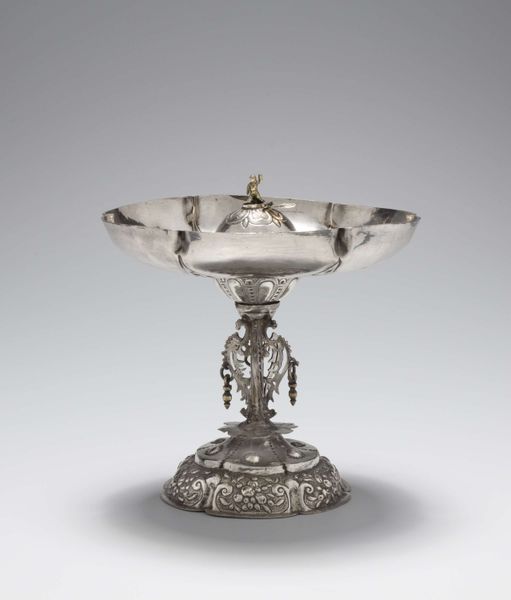
metal, glass, sculpture
#
baroque
#
metal
#
sculpture
#
11_renaissance
#
glass
#
sculpture
#
decorative-art
Dimensions: 9-1/4 x 12-1/4 x 10-1/4 in. (23.5 x 31.1 x 26.0 cm)
Copyright: Public Domain
Curator: Before us is the 'Tazza,' an exquisite example of decorative art housed here at The Met. Though its exact creation date remains debated within the range of 1550 to 1899, the piece is attributed to Reinhold Vasters and demonstrates a fascinating dialogue between Renaissance ideals and Baroque aesthetics. It combines glass and metal into a visually arresting sculpture. Editor: Whoa, it’s like a Cinderella carriage made of ice! You almost expect it to melt before your eyes. There’s something magical about it, like it belongs in a snow queen's palace, holding candied violets. I bet this thing sparkled like mad under candlelight. Curator: Indeed. The 'Tazza,' with its delicate glasswork, wasn't just decorative; it served as a potent symbol of luxury, class, and power, reinforcing social hierarchies. Editor: Well, yeah, the folks eating out of this weren’t exactly worried about their next meal, right? Still, there’s something a bit melancholic here. All that icy perfection makes me wonder about the human touch that created it, and the human hands that will inevitably, you know, drop it someday. Curator: That's an insightful reading. From my perspective, the "Tazza," embodying characteristics of both Renaissance and Baroque eras, highlights the fluid and often contested boundaries between art historical periods, offering opportunities to deconstruct traditional narratives of artistic progress. Editor: See, that’s why I love art – you can get so much from one, shiny object. It's beauty, social commentary, anxiety all swirled up. I imagine Vasters feeling conflicted about creating something so blatantly opulent in a world filled with inequality. Then again, maybe they were just thinking, "Gotta make this thing extra sparkly!". Curator: And it is extraordinarily sparkly. But contemplating its materiality, technique, and socioeconomic context, alongside its formal qualities, lets us use art history to engage with enduring questions about art, society, and the human condition. Editor: So, next time you see something pretty, don't just stop at the "pretty" part. Dive in – there might be a whole ocean of ideas and feelings bubbling beneath the surface, like champagne in a...tazza!
Comments
No comments
Be the first to comment and join the conversation on the ultimate creative platform.
